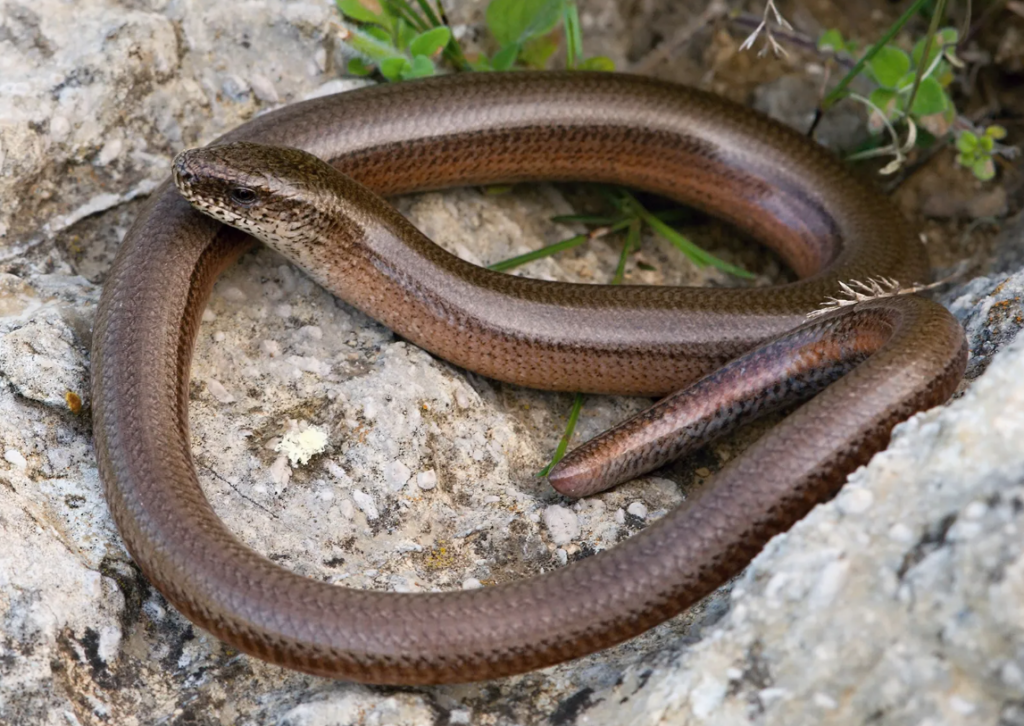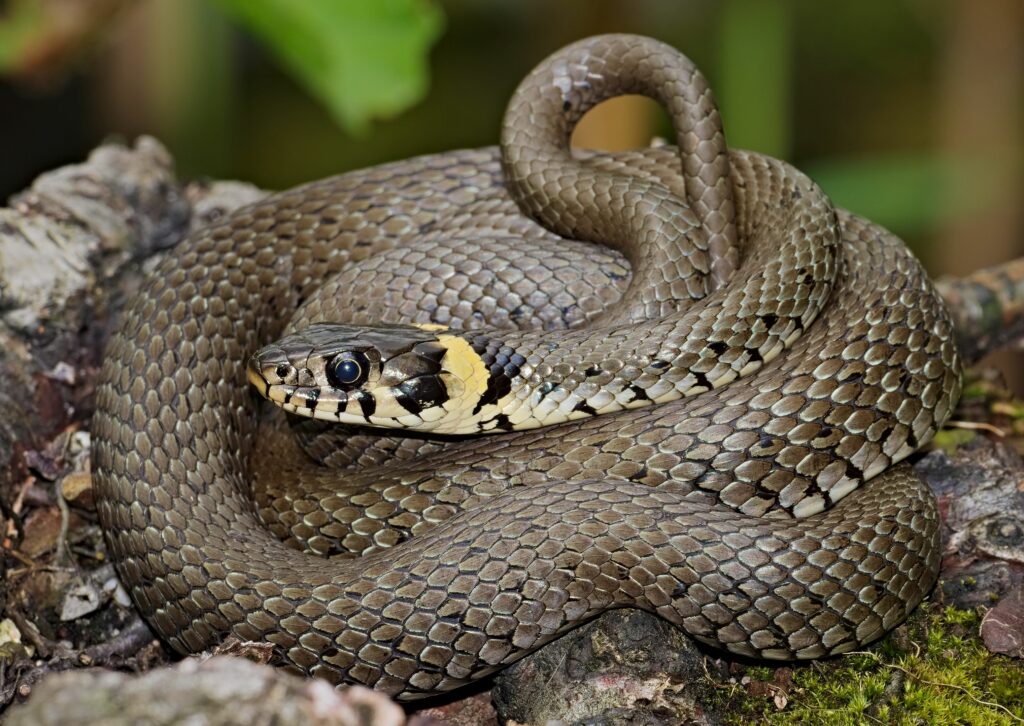When it comes to reptiles, most people tend to think of snakes and lizards as two separate categories. However, there is a remarkable creature that blurs the line between these two reptilian groups – the Slow worm (Anguis fragilis). Often mistaken for a snake, the Slow worm is actually a legless lizard, and it holds a special place in British wildlife. In this article, we will explore the remarkable characteristics, appearance, behaviour, and role of the Slow worm in gardens and its impact on the ecosystem.
The Slow worm’s Appearance
The Slow worm has a distinctive appearance that showcases its reptilian nature. Its body is covered in smooth, shiny scales, resembling those of a snake. These scales provide protection and help retain moisture in their bodies. Unlike most lizards, the Slow worm lacks visible eyelids, giving it a unique appearance. It also lacks external ears, and its eyes are small and often covered by scales.
Slow worms vary in colouration and can range from shades of brown to grey, with some individuals having a metallic appearance. However, the most characteristic feature is a dark stripe that runs along the length of their bodies. This stripe is more pronounced in males, while females and juveniles may have a less distinct or broken stripe. The Slow worm’s cylindrical and elongated body distinguishes it from other British reptiles, such as common lizards or smooth snakes.

Life in British Gardens
Slow worms are native to Britain and can be found in various habitats, including gardens, grasslands, woodlands, and heathlands. However, they particularly thrive in gardens, making them a favourite among gardeners and wildlife enthusiasts. These reptiles are beneficial residents in gardens as they help control populations of pests like slugs, snails, and small insects, making them natural pest controllers.
Due to their adaptability, Slow worms can be found in both rural and urban areas. They have been known to take up residence in mature gardens, especially those with suitable habitat features such as compost heaps, log piles, and areas of dense vegetation. Providing suitable hiding places, such as corrugated iron or old carpet, can encourage these fascinating animals to make their home within a garden’s confines.
Behaviour and Mating
Slow worms are secretive and predominantly active during the warmer months, typically from late spring to early autumn. During the mating season, which occurs in spring, the males engage in elaborate rituals to attract females. They engage in head-to-head combat, attempting to push each other away to secure the attention of a female. These wrestling matches can be intense, and the victor gains the opportunity to mate.
Once a successful mating occurs, the female Slow-worm enters a gestation period that lasts around three to four months. Interestingly, the Slow worm is one of the few lizard species that give birth to live young rather than laying eggs. A female can give birth to several juveniles, each measuring around 10 centimetres in length. These young Slow worms are independent from birth and must navigate their surroundings without any parental care.

Similarities to Snakes and Other Reptiles
While the Slow worm is not a snake, its appearance and behaviour share similarities with these limbless reptiles. Like snakes, the Slow worm has a forked tongue, which it uses to sense its environment and locate prey. It is also an excellent climber, enabling it to move through grass and vegetation with ease. Furthermore, the Slow worm’s ability to shed its skin, leaving behind intact pieces of reptile skin, is reminiscent of snakes.
Slow worms also share habitats with native snakes in Britain, such as grass snakes and adders. While these snakes may be predators to the Slow worm, they also benefit from the presence of this legless lizard. The Slow worm’s diet consists primarily of invertebrates, and it does not compete directly with snakes for food resources. Therefore, their coexistence is an example of the intricate balance of nature.

Conservation and Human Population
Despite being one of the most common lizards in the United Kingdom, Slow-worm populations are still subject to threats. Habitat loss due to urbanization and agricultural practices poses a significant risk to these reptiles. Encouragingly, many conservation efforts aim to protect and enhance the Slow worm’s habitats, ensuring their survival for future generations.
Conclusion
In conclusion, the Slow worm (Anguis fragilis) is a remarkable legless lizard that resides in British gardens and other habitats across the country. With its snake-like appearance, unique mating rituals, and beneficial role in pest control, the Slow worm captures the fascination of those who encounter it. By understanding and appreciating the Slow worm’s exact appearance, behaviour, and significance in the ecosystem, we can contribute to the conservation of this extraordinary species and preserve the biodiversity of British wildlife.
Sources and References
- Slow-worm (Anguis fragilis) – arc-trust.org
- Slow worms: Britain’s most unusual lizards – nhm.ac.uk
Sam loves to learn about animals and their habitats. He has been a nature lover from a very young age, and has been writing papers and articles about wildlife for as long as he can remember.
